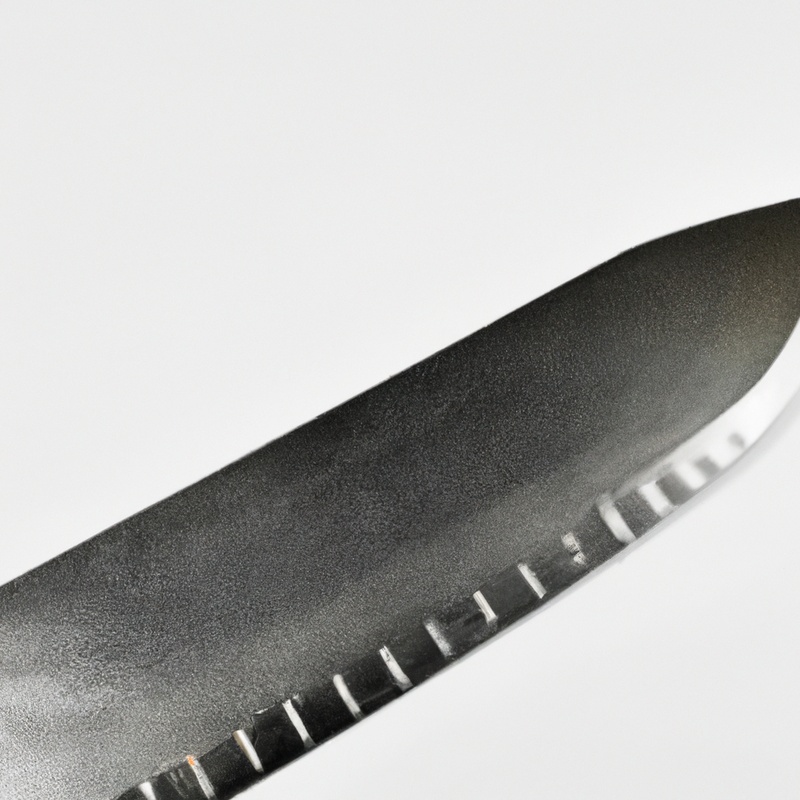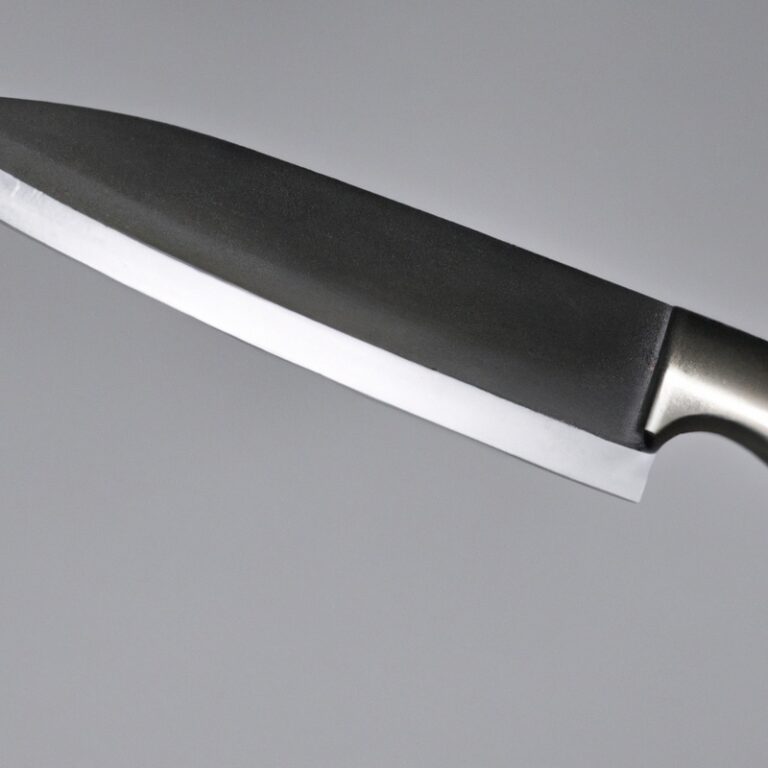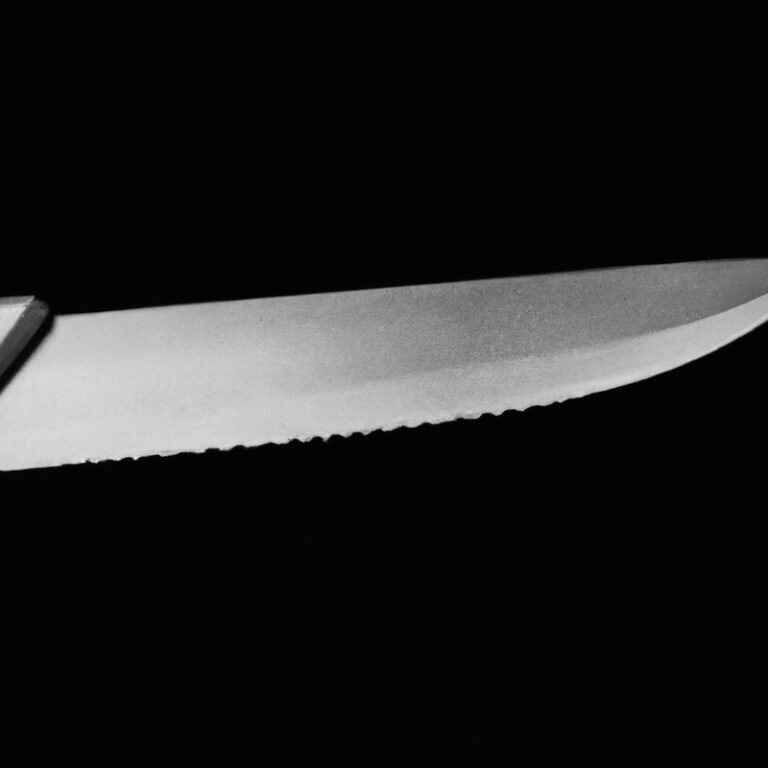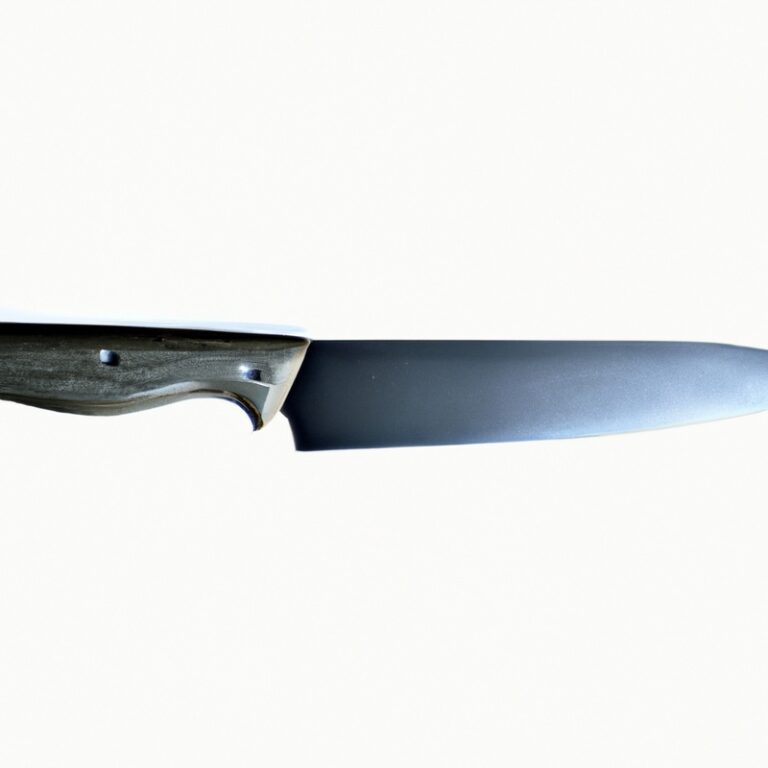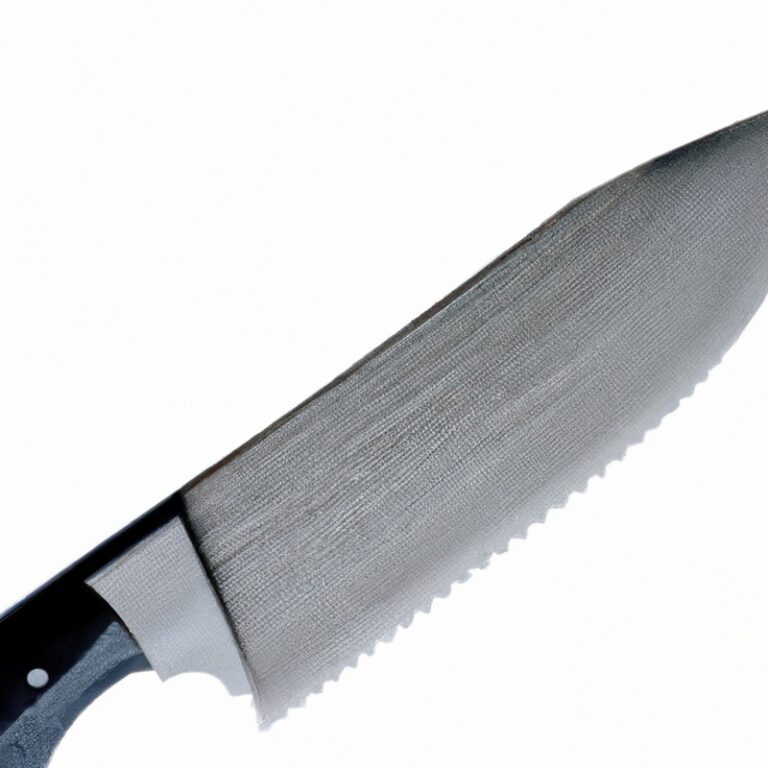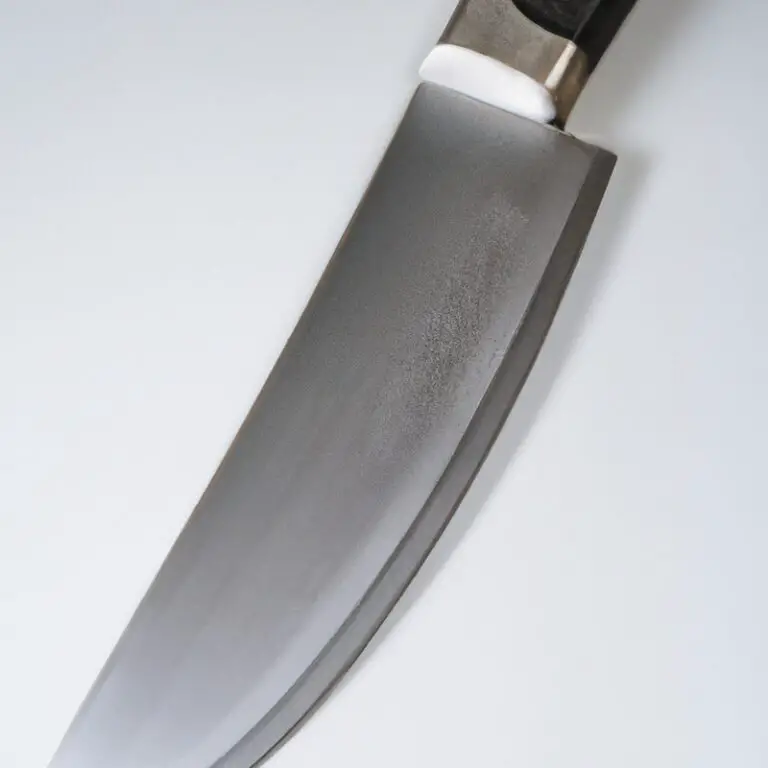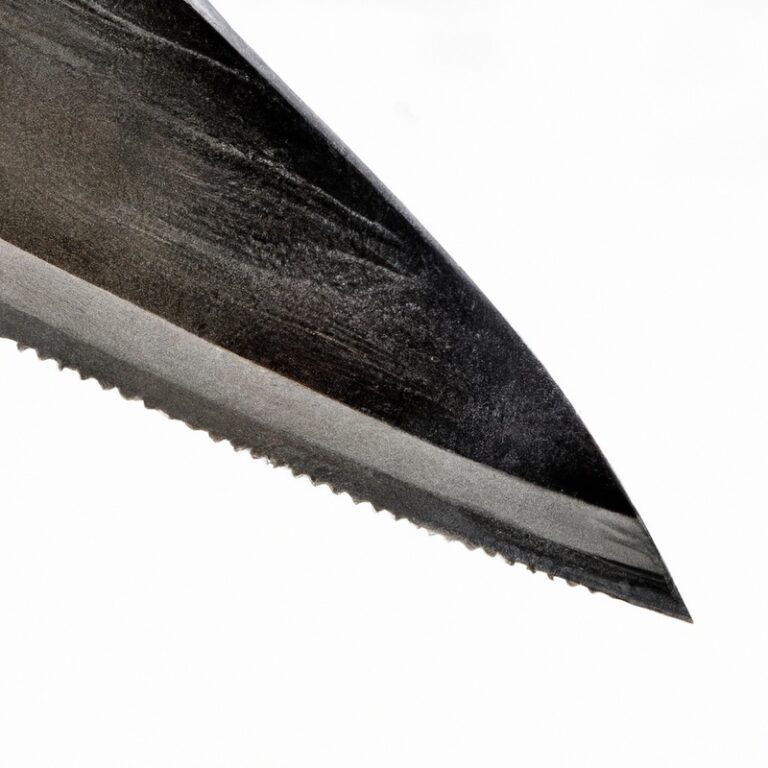What Precautions Should I Take When Using a Serrated Knife To Prevent Accidental Cuts Or Injuries?
Key Takeaways:
- Use a cutting board with a stable surface to prevent the knife from slipping.
- Avoid excessive force while cutting to maintain control of the knife.
- Keep fingers and other body parts away from the cutting path of the knife.
- Regularly maintain and sharpen the serrated knife to ensure optimal cutting performance.
Have you ever experienced the frustration of using a serrated knife and accidentally cutting yourself? It’s a painful reminder that these knives can be tricky to handle if you’re not careful.
But fear not! In this article, I’ll be sharing some essential precautions you should take when using a serrated knife to prevent any accidental cuts or injuries.
From understanding the basics of a serrated knife to choosing the right one for your needs, I’ve got you covered. We’ll also delve into proper grip and hand positioning, maintenance tips, and even first aid for cuts.
So, let’s slice through the dangers and ensure your kitchen experiences are nothing short of smooth and safe!
| Precautions | Description |
| Proper grip | Hold the handle firmly and make sure the knife does not slip from your hand. |
| Use cutting board | Always use a stable and non-slip cutting board to prevent the knife from slipping. |
| No excessive force | Do not apply excessive pressure as it can cause the knife to slip. |
| Cut away from the body | Always cut away from your body to avoid accidentally cutting yourself. |
| Stable surface | Ensure you have a stable surface to work on to prevent the knife from slipping. |
| Avoid distractions | Concentrate on your task and avoid distractions to minimize the risk of accidents. |
| Keep fingers clear | Keep your fingers clear of the blade by using a claw grip when holding the ingredient being cut. |
| Store properly | Store serrated knives separately, ideally in a knife block or sheath, to protect both the blade and yourself. |
Precautions to Take When Using a Serrated Knife
Understanding the Basics of a Serrated Knife
A serrated knife is a unique type of knife that features a jagged edge along the blade. This edge helps the knife grip and cut through tough and crusty surfaces with ease.
Unlike straight-edged knives, serrated knives work best when used in a sawing motion rather than a slicing motion.
They are great for cutting through bread, tomatoes, and other delicate foods without crushing them. Remember to use a gentle sawing motion and avoid applying too much pressure to prevent accidental slips or injuries.
Choosing the Right Serrated Knife for Your Needs
When choosing a serrated knife, consider the following factors to meet your needs:
- Blade Length: Determine the blade length based on the tasks you frequently perform.
- Serration Pattern: Choose between small or large serrations based on the type of food you cut.
- Blade Material: Opt for high-quality stainless steel for durability and sharpness.
- Handle Comfort: Ensure the handle is ergonomic and comfortable to hold for extended periods.
- Knife Brand: Research reputable knife brands known for their quality and craftsmanship.
Remember, selecting the right serrated knife will enhance your cutting experience and ensure efficient and safe use.
Proper Grip and Hand Positioning
When using a serrated knife, it is important to have a proper grip and hand positioning to prevent accidents and ensure control. Here are some tips:
- Hold the knife with a firm grip, but avoid gripping it too tightly, as it can lead to muscle fatigue.
- Position your hand on the handle with your thumb resting on one side and your fingers on the other, creating a stable and balanced grip.
- Keep your fingers away from the blade, placing them on the handle or the spine of the knife for added safety.
- When cutting, use a sawing motion rather than applying excessive pressure. This helps maintain control and reduces the risk of slipping.
- Always focus on the task at hand and avoid distractions to minimize the chances of accidents.
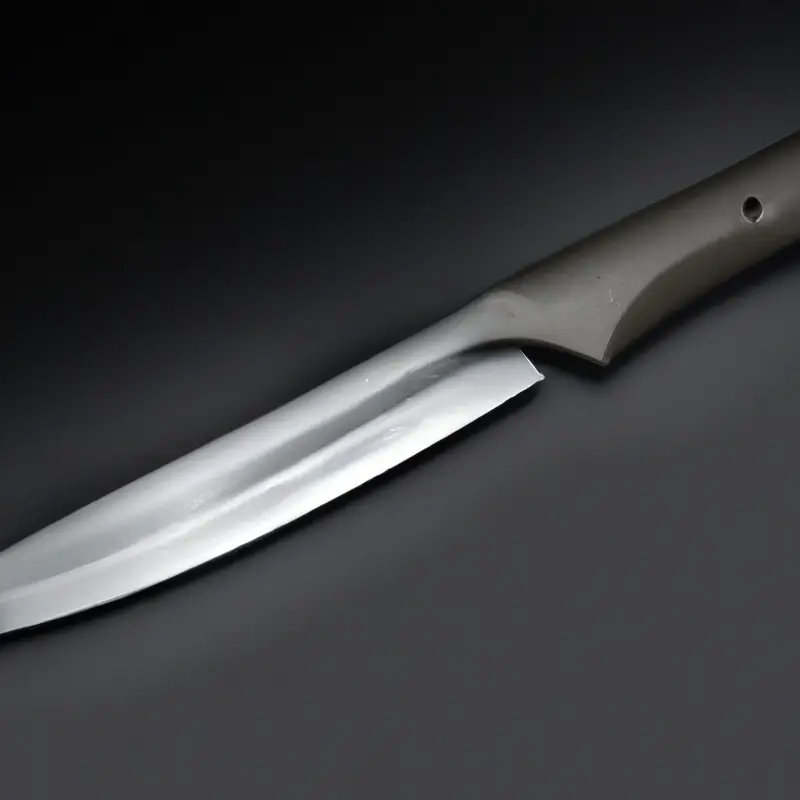
Keeping the Knife Blade Sharp
Keeping the knife blade sharp is essential for safe and efficient cutting with a serrated knife. A sharp blade reduces the risk of slip-ups and ensures clean, precise cuts.
Here are a few tips to keep your knife blade sharp:
- Use a honing rod: Regularly use a honing rod to realign the teeth on the blade, keeping them sharp and ready for use.
- Avoid cutting on hard surfaces: Cutting on hard surfaces like glass or stone can damage the blade. Stick to softer cutting boards or mats.
- Store properly: Store the knife in a knife block or sheath to protect the blade from accidental hits and to prevent dulling.
- Sharpen as needed: When the blade becomes dull, use a serrated knife sharpener or take it to a professional sharpener to ensure optimal cutting performance.
Remember, a sharp blade not only makes cutting easier, but it also helps to prevent accidents in the kitchen.
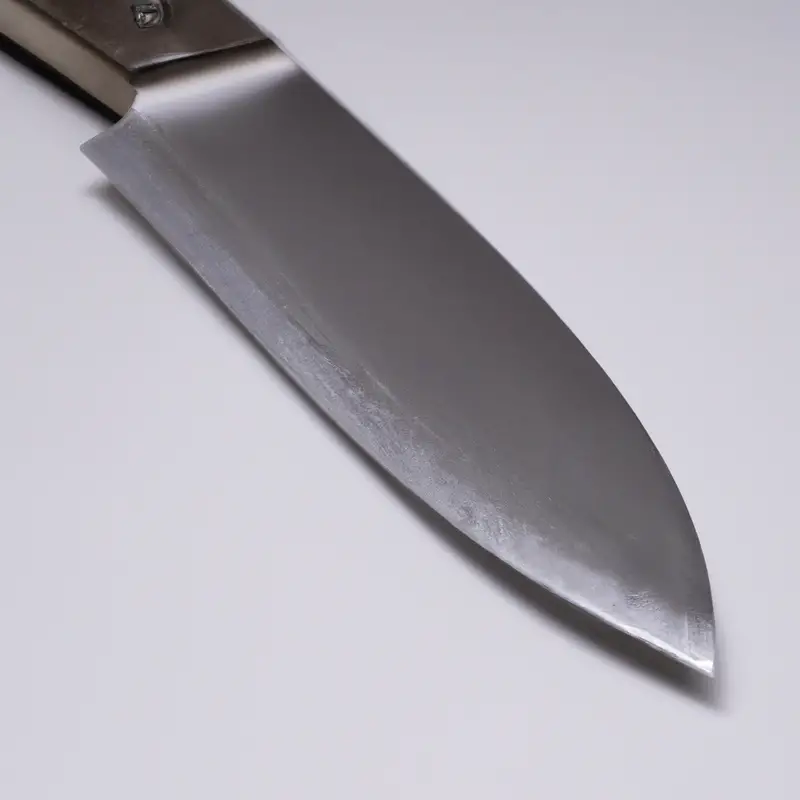
Slow and Controlled Cutting Technique
When using a serrated knife, it is important to have a slow and controlled cutting technique. This means applying even pressure and allowing the knife to do the work, instead of forcing it through the food.
To achieve this, start by positioning the knife at the edge of the food and gently saw back and forth with a smooth, sweeping motion.
Avoid applying excessive force, as this can cause the knife to slip and lead to accidental cuts or injuries. By practicing a slow and controlled cutting technique, you can reduce the risk of accidents and ensure a safer slicing experience.
Avoiding Distractions and Focusing on the Task
When using a serrated knife, it’s important to avoid distractions and stay focused on the task at hand. Here are some tips to help you do that:
- Find a quiet and well-lit area to work in. Minimize background noise and keep your work area clear of unnecessary items.
- Put away your phone or any other electronic devices that may cause distractions. It’s easy to get caught up in notifications and lose focus on your knife skills.
- Avoid multitasking while using a serrated knife. Give your full attention to the task at hand and avoid trying to do other things simultaneously.
- Take regular breaks if you find yourself becoming tired or losing concentration. It’s better to take a short break and come back to the task with renewed focus.
By staying alert and focused, you can reduce the risk of accidental cuts or injuries while using a serrated knife.
Using a Cutting Board with Stability
When using a serrated knife, it’s important to have a stable cutting board to prevent accidents. Here’s how to ensure stability:
- Choose a cutting board that is large enough for your needs and has a non-slip bottom.
- Place a damp cloth or silicone mat underneath the cutting board to provide extra grip.
- Avoid using unstable surfaces like countertops or plates.
- Make sure the cutting board is clean and dry before placing it on the surface.
- Apply even pressure when cutting to reduce the risk of the cutting board slipping.
- Take breaks to readjust the cutting board if necessary.
Using a cutting board with stability will help you maintain control over the knife and reduce the chances of accidental cuts or injuries. Stay safe while preparing your meals!
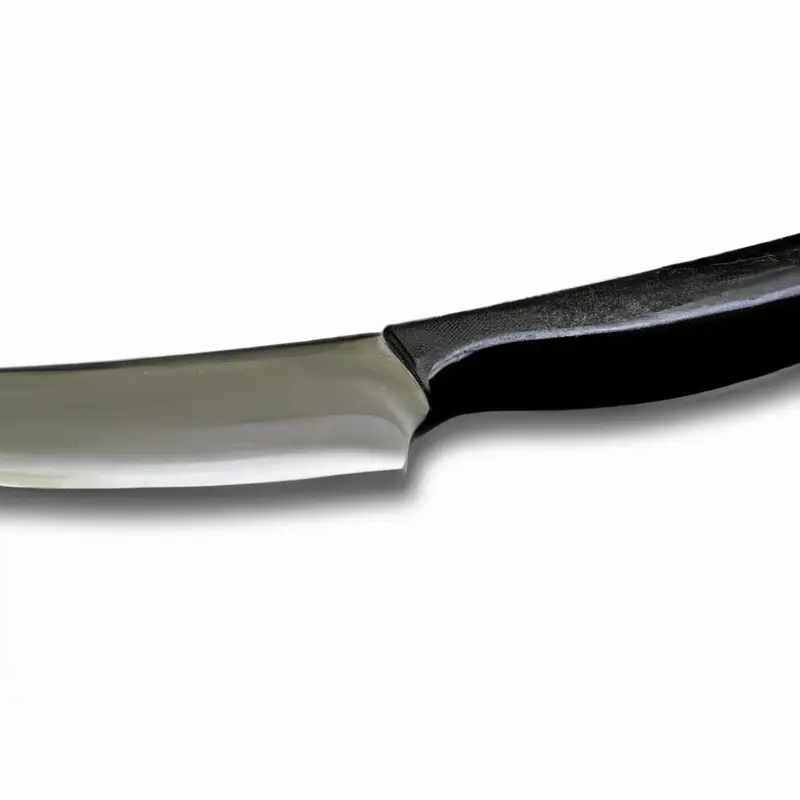
Storing the Serrated Knife Safely
To store a serrated knife safely, make sure to choose a dedicated knife block or sheath that can protect the blade. Avoid storing it loosely in a drawer where it can easily get damaged or cause accidents.
Keep the knife separate from other utensils to prevent scratching or dulling the serrated edge.
Additionally, always clean and fully dry the knife before storing it to prevent corrosion. Proper storage not only keeps your serrated knife safe but also prolongs its lifespan.
Regular Maintenance and Inspection of the Knife
Regular maintenance and inspection of your serrated knife is essential to ensure its longevity and optimal performance. Here are some simple steps you can follow:
- Clean your knife after each use, using warm soapy water and a soft cloth or sponge. Avoid harsh abrasives that can damage the blade.
- Dry the knife thoroughly to prevent any moisture buildup that can lead to rust.
- Regularly inspect the knife for any signs of wear or damage, such as bent or chipped teeth. If you notice any issues, it’s best to replace the knife or have it professionally repaired.
- Sharpen the serrated blade regularly using a sharpening tool specifically designed for serrated knives. Follow the manufacturer’s instructions for the proper technique.
- Store the knife in a safe and secure manner, away from the reach of children, and protected from other objects that can cause damage.
Learn First Aid for Cuts and Injuries
To learn first aid for cuts and injuries, it’s important to have some basic knowledge. First, you should clean the wound with mild soap and water.
Then apply gentle pressure to stop any bleeding.
Next, cover the wound with a clean cloth or bandage. If the cut is deep or won’t stop bleeding, seek medical help.
Remember, it’s crucial to keep calm and maintain a safe environment when assisting someone with a cut or injury.
Final Verdict
Using a serrated knife requires caution and attention to ensure safety. By understanding the basics of a serrated knife, choosing the right one, and properly griping and positioning your hand, you can minimize the risk of accidents.
Regular maintenance and keeping the blade sharp also play a crucial role in preventing injuries.
Additionally, using a stable cutting board and avoiding distractions while cutting are essential. Lastly, it is important to know first aid for cuts and injuries in case accidents do occur.
By following these precautions, you can confidently and safely use a serrated knife in your culinary endeavors.
Stay safe and happy cooking!

